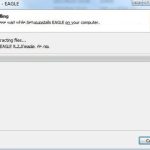The Production Process of Rigid PCB
The production process of PCBs with different difficulty levels and layers may vary slightly, but can be summarized as the following steps:
1. Cutting: Cut out easy to process dimensions from a large sheet of copper clad plate with a certain thickness and copper foil thickness.
2. Drilling: Drill conductive holes or plug-in holes on the board according to the computer drilling program.
3. Copper deposition: Depositing a thin layer of chemical copper into the drilled hole, with the aim of depositing a layer of copper onto a non-conductive epoxy glass cloth substrate (or other substrate) through chemical methods to facilitate subsequent electroplating and conduction to form a circuit.
4. Full board copper plating: mainly used to thicken and protect the thin layer of chemical copper to prevent oxidation in the air, resulting in no copper or broken holes in the pores.
5. Circuit (graphic transfer): Apply dry film or screen printing on the board with graphic anti electroplating ink, and after exposure and development, create circuit graphics.
6. Graphic electroplating: Thickening copper plating is carried out on a board that has already prepared graphic circuits, so that the copper thickness in the holes and circuits reaches a certain thickness, which can load a certain amount of current.
7. Etching: Remove the graphic ink or dry film, and etch off excess copper foil to obtain conductive circuit patterns.
8. Tin removal: Remove the tin layer from the formed pattern to expose the required circuit.
9. Silk screen solder mask ink or paste solder mask dry film: Print a layer of solder mask ink or paste a layer of solder mask dry film on the board, expose and develop it to create solder mask graphics, mainly to prevent short circuits between circuits during welding.
10. Gold plating/tin spraying: Depositing gold or spraying a layer of tin on the area where welding is required on the board is convenient for welding, while also preventing oxidation of the copper surface at that area.
11. Characters: Print some iconic characters on the board to facilitate customer installation of components.
12. Stamping/Forming: Process the shape of the board according to customer requirements.
13. Electrical testing: Detect whether there is an open or short circuit phenomenon in the PCB by closing the circuit.
OPCBA.COM provides a one-stop service, welcome to contact us





